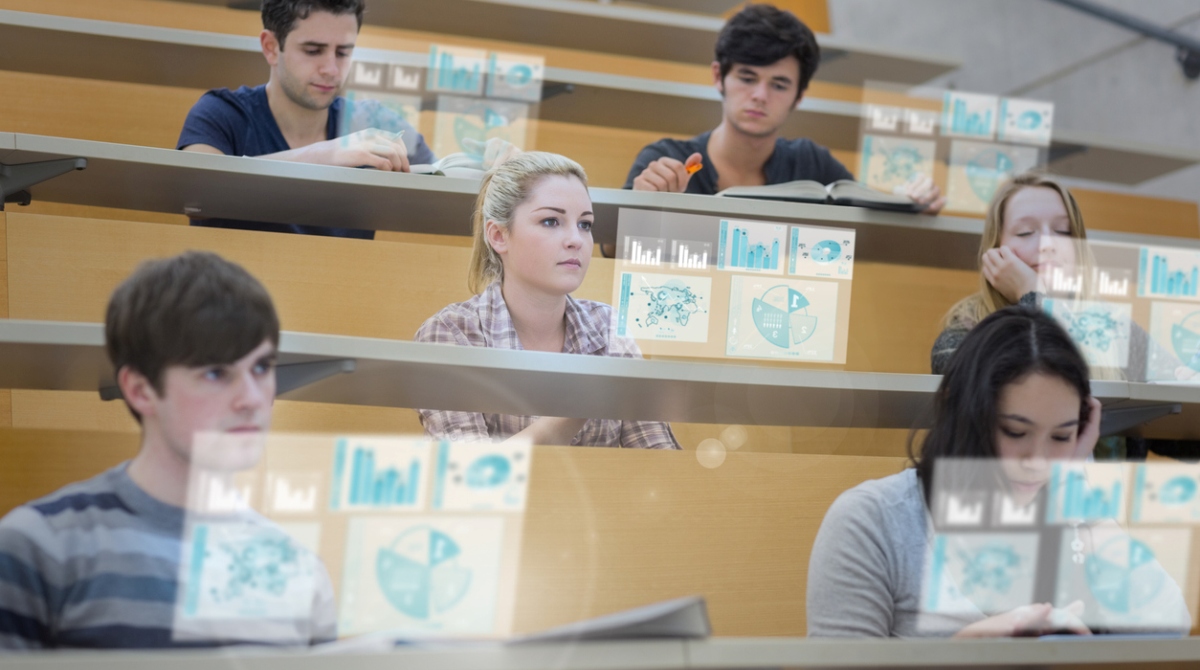When our parents recall their school days, they make no big deal about a makeshift class under a tree. They were used to take down notes from the blackboard on which teachers would write using dusty chalk. With time, chalk and duster were replaced with touchscreens, audio-visual facilities, and the era of digital learning started. However, the journey will be much more exciting in the next decade.
Here are the 5 things that will not be same in the future classrooms:
Advertisement
Question papers and answer sheets– We have already seen some tests being conducted online. However, as technology becomes more accessible and affordable, it will largely replace pen and paper-based tests. The rationale is simple. Online tests need lesser logistical arrangements, can be customized for different batches and evaluated quickly and accurately using artificial intelligence and algorithms. Imagine the time saved by future high school and 12thaspirants when they receive their board exam results within a week, thanks to online examination. They can plan the future course of their career and do not have to spend months in speculation.
Practice Books- Practice makes a man perfect. All of us have heard (and practised) it. But technology will change the way students practice. For instance- Avocado, an app enables students to practice questions from Maths and Science. Using Avocado, a student can get customized practice tests, detailed explanation for answers, and review their results with just a few taps. What makes a digital platform for practice like Avocado unique is the insights based on test results over a period of time.
This helps the students understand areas which require intervention from their teacher or parents.Using Avocado and similar practice solutions, parents and teachers can also track the progress of their wards and make informed decisions to improve speed and accuracy. All these details are available on a smartphone- anytime, anywhere.
Computer Labs- Once upon a time, computers were rare commodity for Indian students. The weekly computer lab class was their chance to touch, feel, and see this magic box. However, this is no more the case. With the digital revolution, most middle-class families can afford a personal computer.
Moreover, about 337 million smartphones make India world’s second largest smartphone equipped population. Over the next 5 years, smartphones and tablets will completely transform the look and feel of computer labs in schools. These labs will follow Bthe ring-Your-Own-Device and Do-It-Yourself approach. Meanwhile, teachers can take the role of mentors.
There will be many innovations that trigger self-learning in computer labs. For example, Cubetto is a friendly wooden robot that can teach early age learners the basics of computer programming through adventure and hands-on play. The CubettoPlayset consists of a friendly robot made of hard-wearing wood, a physical programming board, and a set of colourful coding blocks that make up a programming language you can touch.
Textbooks- Typically, textbooks are written assuming ‘one-size-fits-all’. The need of the hour is to customize the learning journey for every student based on speed, understanding, and interests. E-books can fill this much-needed gap. Powered by virtual learning, artificial intelligence, and machine learning, e-books are well suited for supplementing conventional textbooks.
Students also appreciate the interactive nature of E-books. Having said that, textbooks are and will remain an important part of the education system. We will see an amalgamation of both textbooks and e-books going ahead.
Benches and desks- The neat rows of benches are meant to seat students in a way that they focus on the teacher delivering a lecture and demonstrating concepts on the board. But this approach will soon go out of favour. Future classrooms will have flexible seating arrangement suited for the task that students are working on.
The design will also consider comfort of the students. Standing desks for those who find it hard to focus while sitting, accommodation for physically challenged, collaborative stations for group activities, and moving walls to make the space more adaptable are some classroom design innovations that will become the new normal.
The author is co-founder and Managing Director of Eupheus Learning











